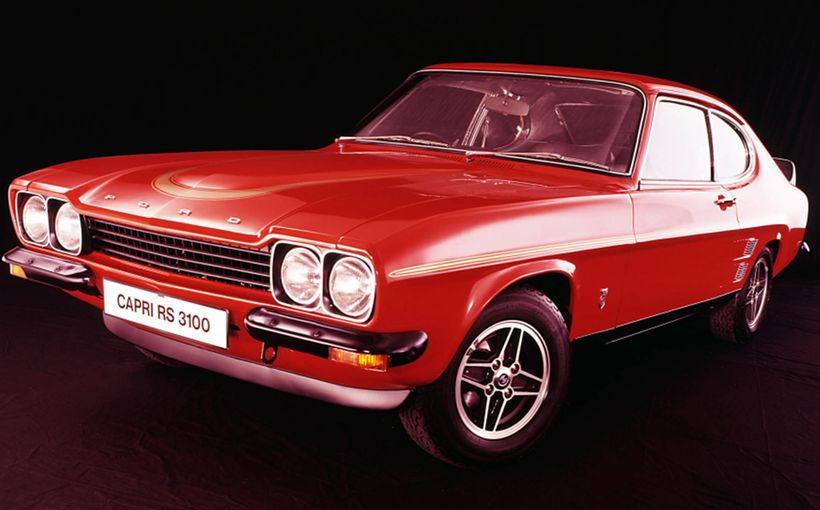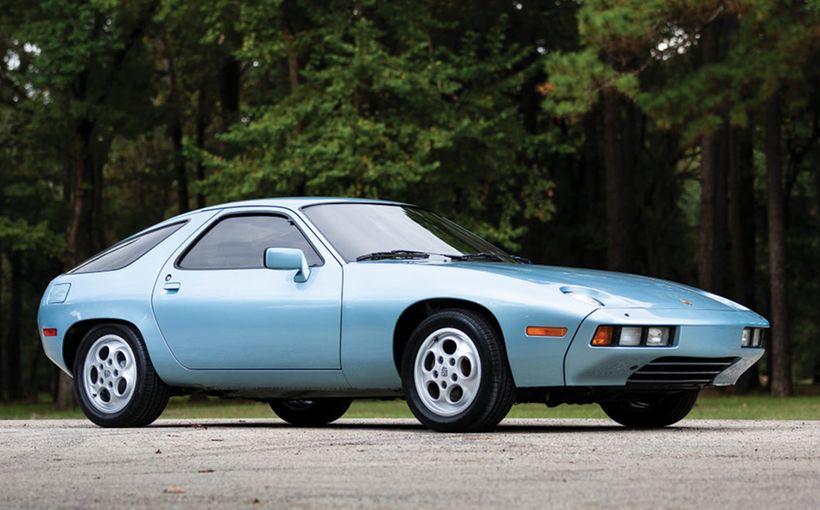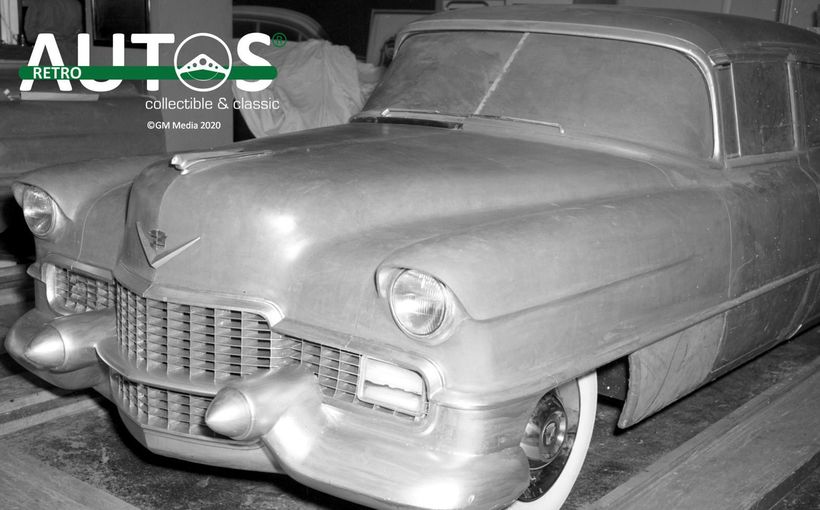Leyland Marina: rallying, V8 sports sedans and Bathurst on a budget

Designed primarily for fleet buyers and middle-class families, the much-maligned Marina boasts a diverse motor sport heritage which belies its reputation as one of the world’s worst cars.
Released in the UK in 1971 as the Morris Marina, it was British Leyland’s ‘best of both worlds’ single-model answer to Ford’s Escort and Cortina which were dominating sales in the small and medium-sized vehicle classes.
And given the Escort’s phenomenal success in rallying, thanks largely to the efforts of its Boreham competition department, it made sense for British Leyland’s in-house Special Tuning branch to explore the potential of the Marina in UK motor sport.
The Marina also caught the imagination of racers elsewhere, as it was exported to the USA and assembled in numerous other countries including New Zealand, South Africa, Malaysia - and Australia.
Highlights of its local competition activities will be explored in this story, including some wild V8-engined sports sedans (two with factory connections) and the first and only Marina (a six cylinder model in fact) to compete in the Bathurst 1000.

Rallying
The Marina mirrored its Escort and Cortina rivals with a simple front-engine-rear-wheel-drive layout. However, severe cost-cutting could be seen in its independent front suspension, which shared the Morris Minor’s antiquated 1940s design with torsion bars and hydraulic lever-arm dampers.
Under the tail was a leaf-spring live rear axle with compromised shock absorber angles and engine choices were limited to BMC’s venerable A-Series and B-Series fours. In the UK it was available in sedan, coupe, wagon, ute and van body styles.
On reflection, the Marina – particularly the two-door coupe with its light 905kg kerb weight – could potentially have attracted similar reverence to the Escort had British Leyland boss Donald Stokes not abruptly shut down BMC’s competition department in 1970.
Its replacement was British Leyland’s Special Tuning. Given that its primary role was to provide technical support for private competitors, Special Tuning lacked the financial muscle and management enthusiasm required to run all-out rally campaigns the way BMC ‘Comps’ did during its halcyon days of the 1950s and ‘60s.

Even so, Special Tuning enjoyed some success in rallying with a 1.3 litre Marina coupe. Driven by gritty former works driver Brian Culcheth, the humble Marina with its Mini Cooper S - inspired engine upgrades won its class in Britain’s 1971 RAC Rally. The coupe went on to claim 12 more class wins in national and international rallies until 1975, when it was replaced by the new Triumph TR7.
British Leyland’s South African subsidiary, Leykor, also rallied Marinas, powered initially by Rover’s light and compact 3.5 litre aluminium V8 and later by stove-hot versions of the 16-valve Triumph Dolomite Sprint four.
Special Tuning also built a Rover V8-powered Marina coupe to compete in the 1974 London-Sahara-Munich World Cup Rally. Commissioned by British truck manufacturer and major sponsor Foden, it was built light and strong by former BMC Comps mechanics.

Crewed by British Army Majors John Hemsley and John Skinner, it was competitive in the early European stages, sitting third behind Andrew Cowan’s works-prepared Escort RS2000 and Sobieslaw Zasada’s leading Porsche 911 Carrera for the start of the second leg through the Sahara.
However, the vast and treacherous African desert took its toll on many cars, including the V8 Marina which was forced to retire in southern Niger with a cracked rear axle housing. It was the only component on the car which had not been built by Special Tuning.
Even so, the same department had built another Rover V8-powered Marina coupe, which somehow ended up in Australia where it would take part in a very different form of competition.

The Australian connection: V8 Sports Sedans
In local Leyland showrooms, the Marina was offered only in sedan and coupe body styles. The Aussie-built versions introduced in 1972 differed from their UK cousins with considerable local content and a name change from Morris Marina to Leyland Marina in 1973.
The Australian cars further diverged in using Leyland’s E-Series SOHC four cylinder (1500cc/1750cc) and six cylinder 2600cc engines. Although not a great sales success, the Marina did appeal to a small number of Aussie racers who could see potential in the two-door coupe in modified form.
One of those was Leyland Australia employee Noel Delforce who started with the company in the BMC days as an apprentice fitter/machinist before being transferred to the Experimental Department at the Zetland, Sydney plant.

This was nirvana for such a performance enthusiast, as it not only allowed him to be closely involved in development of the P76’s 4.4 litre aluminium V8, but also work after-hours on his race cars with access to parts and engineering facilities.
After starting with a modified Wolseley 24/80, Noel commenced construction of a Marina coupe before the model was released in 1972. Like the Wolseley it was built to compete in the burgeoning Sports Sedan category, which allowed many freedoms including engine swaps.
He sourced the coupe bodyshell from Experimental, plus a new Rover V8. This was initially equipped with a Repco flat-plane ‘stroker’ crankshaft which boosted the V8’s capacity from 3.5 to 4.2 litres. Noel later installed new cylinder sleeves to increase the standard 3.50-inch bores to 3.70-inches, resulting in a cubic capacity of just over 4.7 litres - the equivalent of a Ford 289 only much lighter.

It also featured an exotic cross-over inlet manifold designed by the chaps at Experimental, fed by a quartet of 45mm side-draught twin-choke Dellorto carburettors. On Leyland’s dyno this engine produced about 370bhp and, largely thanks to the long intake runners, impressive torque of around 420 ft/lbs.
With invaluable assistance from Experimental’s Roy Cullen, who Delforce describes as “the smartest fabricator in Australia”, the Rover V8 was soon neatly installed along with a twin-plate clutch, Borg Warner single rail four-speed gearbox and Leyland C-Series live rear axle with Detroit Locker. It also had a fully welded tubular steel roll cage/space-frame for maximum chassis stiffness.
The front suspension was MGB-based and the live rear axle was located by equal-length upper and lower trailing arms and a Watts Linkage. Excellent braking was provided by four P76 discs and callipers.

It was a wild-looking machine, with its much wider track widths front and rear and 10-inch wide race tyres bulging under fiberglass flares. And its awesome power-to-weight ratio also ensured ballistic acceleration. However, it was almost as wide as it was long, resulting in fearfully twitchy handling.
“I gave Leo Geoghegan (who was then competing in F2 open-wheelers) a drive of it during a test session at Oran Park,” Delforce told Shannons Club. “He did about 10 or 12 laps in it and when he came back into the pits the first thing he said to me was ‘Noel, you are a very brave boy!’ which I took as a compliment.”
To try to improve the handling, the car’s wheelbase was extended by 3.0 inches at the front. Sure, it was bending the rules, but not uncommon in this class of racing. The trick was to ensure the Marina was always parked in the pits with its steering on full lock so no-one would notice!
Delforce’s Marina V8 raced from 1972 until the closure of Leyland’s Zetland manufacturing plant in 1974, when Delforce (now regrettably) sold the car. The engine went to sports car racer Greg McCombie while the rolling chassis went to Neil Byers, who installed a 283cid Chev small block V8 without much success. The car was eventually scrapped.

Another prominent Marina coupe V8 Sports Sedan which competed in the mid to late 1970s was the car owned by Western Australia’s Gordon Mitchell. This car has a fascinating history as it started life as the factory-built sister car to the 1974 World Cup Rally contender covered earlier in this story.
Complete with 3.5 litre aluminium Rover V8, it had been imported by a British Embassy staff member based in Canberra. Mitchell raced the potent Marina V8 from 1976 to 1981 with one of its greatest successes being the 1979 Western Australia Hillclimb Championship in which it defeated the HDT’s Torana A9X. It’s believed to still be in WA.
Another memorable Marina coupe to follow the V8 Sports Sedan route was the car driven by Bruce Watt. Little is known of this wild machine apart from the fact it was powered by either a Rover 3.5 litre or P76 4.4 litre aluminium V8. The car was regularly seen in Sports Sedan events on the east coast in the 1970s. Its whereabouts today is unknown.

Bathurst on a budget
Imagine if you could put a car on the Bathurst 1000 starting grid for only $2500? Even by 1974 standards that was a paltry amount, but that’s what it cost club racers and rookies Neil Byers and Peter Molesworth to drive the only Leyland Marina in Australia’s greatest motor race. And the first (and possibly only) Marina Six to compete on a race track anywhere in the world.
According to a detailed report by Steve Maher in Craig Watson’s sorely missed BMC Experience magazine, Byers had his first taste of Mount Panorama during the annual Easter meeting in 1973 and wanted to return the following year, but when the Easter meeting was permanently cancelled the only other opportunity was the annual 1000km touring car race scheduled for Sunday October 6.
Fortunately for Neil, he’d been good friends with Noel Delforce since the 1960s. And as Noel was working for Leyland’s Experimental Department, the pair decided the cheapest ticket onto the Hardie-Ferodo 1000’s starting grid would be a Marina Six. At that stage Byers and Delforce were going to share the car at Bathurst - Molesworth’s call-up would come later.
Delforce used his factory connections to source a new Marina coupe bodyshell. All sealants and sound-deadening compounds were deleted to save weight and Delforce walked it down the production line to ensure extra spot welds and reinforcing were added in critical areas. The end result was a bodyshell that was much stronger and lighter than a standard one.

The Bathurst Marina was actually the product of two cars, as most of the parts installed in the new bodyshell were from a written-off Hertz rental car. These included the Borg Warner three-speed manual gearbox with floor shift, rear axle assembly, interior trim and wiring loom.
Selby’s sorted out the suspension to best suit the 13 x 7-inch Goodyear racing slicks on widened steel rims. The aluminium roll cage was installed by Bond Roll Bars. The brakes remained stock apart from the Hardie-Ferodo 1103 front disc pads and rear shoes which easily lasted the whole race.
A larger fuel cell was needed and Byers came up with a cost-effective solution by adapting a fiberglass tank from a Cessna light aircraft. This not only took advantage of Group C’s maximum 120-litre limit (the Cessna unit was actually way over that, but no-one checked); it also featured an internal bladder tank which met all fire safety requirements.
Delforce, who built the engines for Evan Green’s 1974 World Cup P76 and 1977 London-Sydney Range Rover, hand-picked the best components from the production line to build the Marina’s 2.6 litre SOHC E-series six. He also fitted a larger 2.0-inch SU carburettor (standard 1.75-inch) and a less restrictive straight-through exhaust pipe, both allowed under the Group C rules.

That’s when the project hit a speed hump. The Clerk of Course Fred Pearce had clashed with Delforce in the past and would only accept the Marina entry with another co-driver. This was much to the annoyance of Leyland staffers, who naturally wanted to see their man behind the wheel. That’s where Peter Molesworth stepped in as a late replacement, only a couple of weeks before the race.
The Marina Six was given a quick shakedown at Oran Park before the team headed to Bathurst, where it carried race number 34 in Class C (2001-3000cc). As Molesworth had never been to Mount Panorama, Byers amused his crew by attaching a Bathurst tourist map of the track to the dashboard!
In those days, the Bathurst 1000 was a two-day meeting, with practice and qualifying on Saturday. This meant the rookies only had one dry session in which to qualify both themselves and the car before it started to rain.
The 2.6 litre engine seemed to be down on power, which engine builder Delforce traced to inefficiencies in the SU carburettor in dealing with Mount Panorama’s high altitudes. The thinner air resulted in less volumetric efficiency, an unavoidably richer fuel-to-air ratio and higher fuel consumption, but by that stage it was too late to change to a different set-up.
The rookies did well to scrape onto the last row of the capacity 60-car grid with the 59th fastest time of 3min 29.3 secs - more than 37 seconds slower than the Haehnle/Brabham Mazda RX3 which claimed the fastest time in Class C (2min 51.7 secs). However, even with the carburettor issue, the Marina Six was no slouch in a straight line, pulling around 190km/h down Conrod Straight which was considerably faster than the 165km/h peak of a showroom version.

Byers started the race and after an early brake issue continued to circulate consistently until the team’s first scheduled stop for refuelling and a driver change at around lap 50.
The cash-strapped team came up with a primitive but effective way to speed up the refuelling process, which beggars belief even by 1974 standards. They modified the lids on their 20-litre steel fuel cans to fit long plastic hoses that could be inserted in the car’s filler neck. However, to make each can empty its contents as quickly as possible when inverted, a crew member would let air in by bashing a hole in the bottom of each drum with a brickie’s chipping hammer! One spark and…
The infamous 1974 race turned treacherous when rain hit the top of the Mountain at around 2pm during Peter Molesworth’s stint and sent many slick-shod cars spearing off the circuit. He soon pitted to swap to wet weather tyres. However, these were not proper hand-grooved racing wets but merely a set of Olympic Reflex street radials mounted on stock 13 x 5.5-inch steel wheels.
He returned to the track which was now saturated from top to bottom, with streams of water in many places and visibility nudging zero. With the Marina’s windscreen fogged up, in desperation Molesworth loosened his seatbelt harness so he could at least stick his head out the side window to follow the white lines painted on the edge of the track to see where he was going.

Not surprisingly, the rookie also suffered a spin through the Dipper during this nerve-wracking drive but fortunately escaped without damage. At the end of his 50-odd lap stint, he pitted for the final time to refuel and hand the car back to Byers for the run to the flag.
After almost eight hours of racing, the John Goss/Kevin Bartlett XA Falcon GT Hardtop took the chequered flag to win the 1974 Hardie-Ferodo 1000 outright. 38 laps behind them was the lone Marina Six, having finished sixth in Class C and second last overall. However, the Marina crew had achieved a major triumph in just finishing the race, given that only 26 of the original 60 starters – or less than half the field - were classified as finishers.
So, the Morris/Leyland Marina will no doubt continue to attract global derision, which in some ways is justified. However, it also boasts a global motor sport heritage unmatched by numerous cars of its era, which many of its critics are perhaps unaware of.
*Special thanks to Noel Delforce, Steve Maher and Craig Watson for their valuable assistance.









